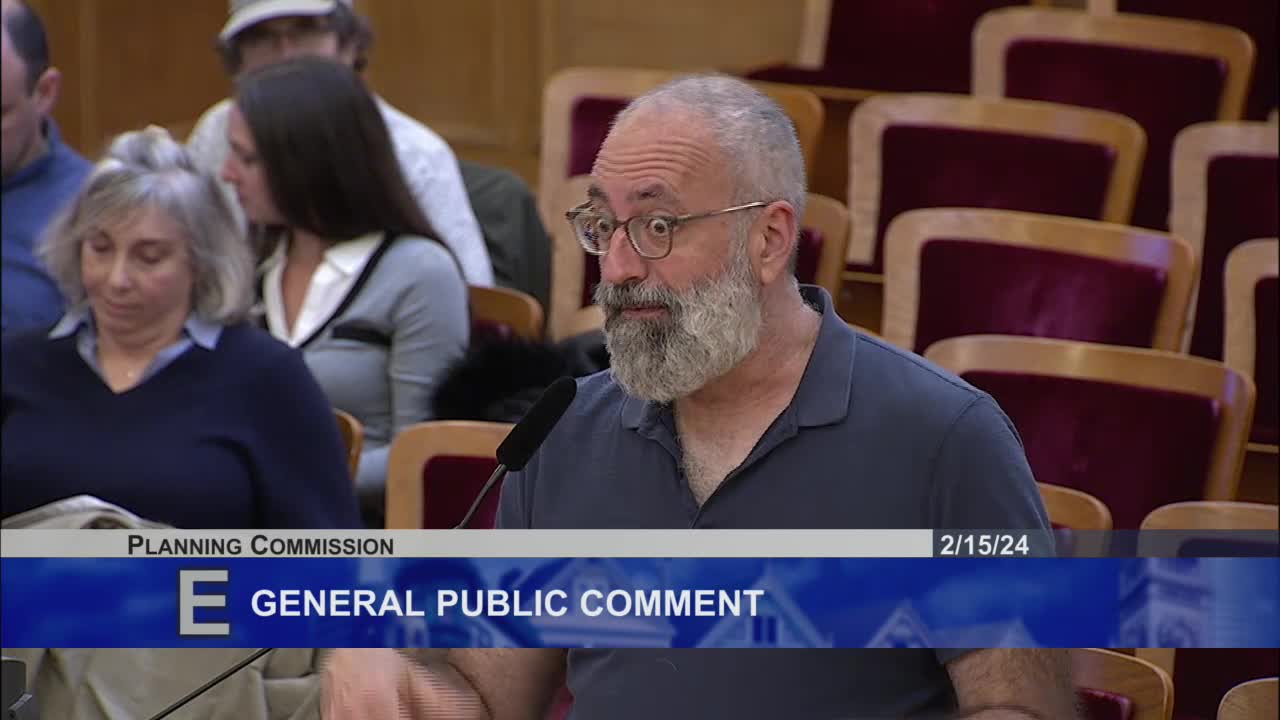Planning experts warn city of gaps in transportation and land use strategies
February 15, 2024 | San Francisco City, San Francisco County, California

This article was created by AI summarizing key points discussed. AI makes mistakes, so for full details and context, please refer to the video of the full meeting. Please report any errors so we can fix them. Report an error »

In a recent government meeting, city planners highlighted the urgent need for comprehensive planning in San Francisco, particularly regarding land use and transportation. The discussions underscored a critical gap in the city’s approach to urban development, emphasizing that without a strategic plan, the city risks exacerbating existing transportation challenges and failing to meet housing demands.
One of the key points raised was the necessity of zoning areas, such as the West Side, to accommodate the construction of 100,000 new housing units. This proactive approach is essential for city planners to understand future capacity needs and to effectively manage transportation routes. However, it was noted that the current public works and transportation agencies lack a cohesive planning strategy. They focus on executing projects and maintaining infrastructure but do not engage in long-term planning for streetscapes or urban greening.
The meeting also addressed the importance of mixed-use developments, suggesting that a more flexible approach to land use could enhance neighborhood walkability and economic diversity. A significant concern was raised about the location of office spaces, with data indicating that transit ridership declines sharply with distance from transit hubs. The planners pointed out that many existing office spaces are situated in areas with poor public transportation access, which could hinder the city’s overall transit efficiency.
As the city moves forward with its land use element, the planners urged a disciplined approach to permitting office developments, advocating for clustering these spaces near quality public transportation. This strategy is seen as vital for achieving a balanced relationship between land use and transportation, ultimately benefiting residents and improving the city’s infrastructure.
The discussions from this meeting reflect a growing recognition of the need for strategic urban planning in San Francisco, as officials aim to address housing shortages and enhance the city’s transportation network. The outcomes of these conversations will be crucial in shaping the future of San Francisco’s urban landscape and ensuring it meets the needs of its residents.
One of the key points raised was the necessity of zoning areas, such as the West Side, to accommodate the construction of 100,000 new housing units. This proactive approach is essential for city planners to understand future capacity needs and to effectively manage transportation routes. However, it was noted that the current public works and transportation agencies lack a cohesive planning strategy. They focus on executing projects and maintaining infrastructure but do not engage in long-term planning for streetscapes or urban greening.
The meeting also addressed the importance of mixed-use developments, suggesting that a more flexible approach to land use could enhance neighborhood walkability and economic diversity. A significant concern was raised about the location of office spaces, with data indicating that transit ridership declines sharply with distance from transit hubs. The planners pointed out that many existing office spaces are situated in areas with poor public transportation access, which could hinder the city’s overall transit efficiency.
As the city moves forward with its land use element, the planners urged a disciplined approach to permitting office developments, advocating for clustering these spaces near quality public transportation. This strategy is seen as vital for achieving a balanced relationship between land use and transportation, ultimately benefiting residents and improving the city’s infrastructure.
The discussions from this meeting reflect a growing recognition of the need for strategic urban planning in San Francisco, as officials aim to address housing shortages and enhance the city’s transportation network. The outcomes of these conversations will be crucial in shaping the future of San Francisco’s urban landscape and ensuring it meets the needs of its residents.
View full meeting
This article is based on a recent meeting—watch the full video and explore the complete transcript for deeper insights into the discussion.
View full meeting
